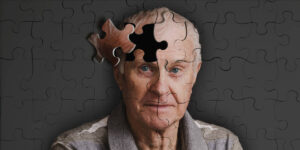Cervical Myelopathy – An Overview
Cervical myelopathy occurs due to compression of the cervical spinal cord in the neck. Cervical myelopathy is most common in adults and elderly people.
Cervical myelopathy is mostly caused due to several factors like degeneration or rupture of a cervical disc, slipped disc, neck dislocation or fracture, traumatic cervical spine injury, compression and tumors in the spinal cord and other auto immune diseases that include multiple sclerosis, myelitis and neuromyelitisoptica.
The symptoms of cervical myelopathy are as follows:
* Tingling sensation in legs and arms
* Difficulty in balancing while walking
* Difficulty in flexing the neck
* Difficulty in motor functions like buttoning shirt
* Weakness in muscles and limbs
* Pain in arms and shoulders
* Loss of position sense
When there is narrowing of the spinal canal, the bony tube through which the spinal cord runs, the whole spinal cord may be affected. This is different than when the bone spurs only narrow one of the foramen – the openings where the nerve roots exit. The symptoms are much different. A pinched nerve from either a herniated disc or a bone spur rarely affects the legs. Cervical myelopathy can affect both the arms and the legs.
The other factors that increase the risk of cervical myelopathy include ischemia, over stretching of spine, medical history of back and bone injuries, vascular disease, having narrow spinal canal since birth and so on.
The doctor will carry out a physical examination to diagnose cervical myelopathy based on the symptoms and medical history. Neurological tests may also be carried out to determine the functionality of reflexes, mental condition and vision. These tests include x-ray, CT myelogram and MRI scan, electromyography (EMG) and additional l tests such as evoked visual test and somatosensory test.
Cervical myelopathy can be treated in several ways that includes a combination of therapies and medication.
The doctor may suggest strengthening exercise that helps in reducing and managing the pain as well as improving the functioning. Other non-surgical approaches are physical, occupational and heat therapies as well as electrical stimulation.
In severe cases, if there is more pressure on the spinal cord, the doctor may also recommend cervical myelopathy surgery which includes vertebrae fusion, discectomy and laminectomy.



